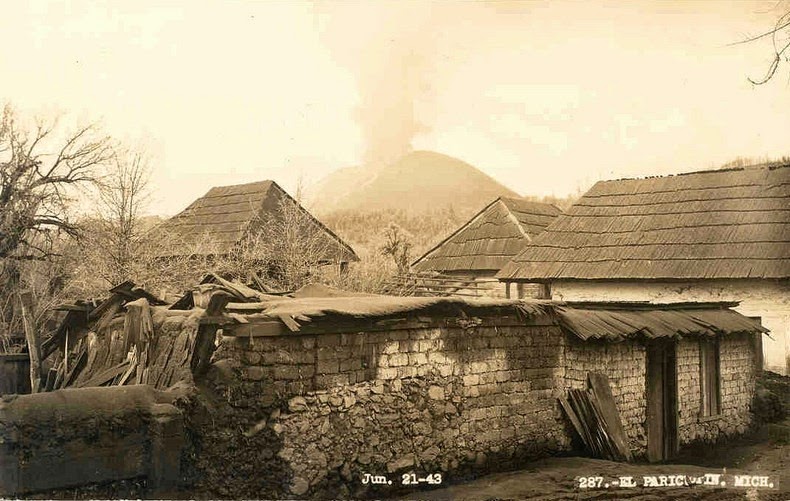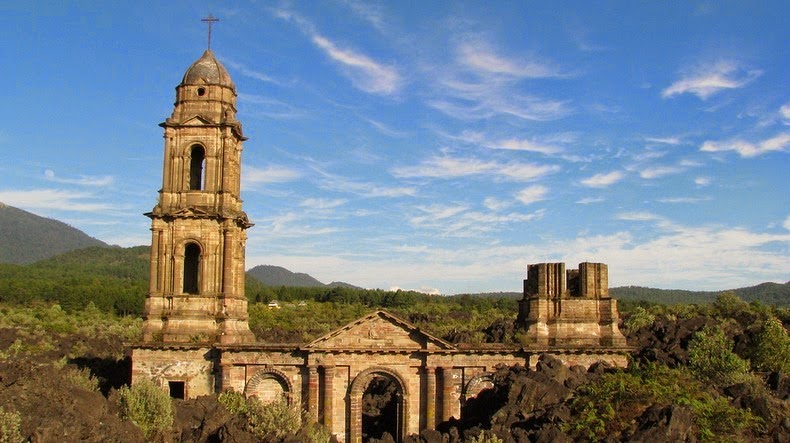Rarely do volcanologist get to watch the birth, growth, and death of a volcano.
Paricutin provided such an opportunity.
Unlike most volcanoes, Paricutin volcano didnt exist until that fateful day.
Paricutin is the youngest volcano to form in the Northern Hemisphere.
Dionisio Pulido was not sure what it was, but it frightened him enough to flee the scene.
Incredibly, what the farmer unknowingly witnessed was the birth of a new volcano.
What they saw both amazed and terrified them.
Rocks and smoke were shooting into the sky while the cone was growing before their very eyes.
“VOLCANO Born at 5:30pm on February 20, 1943 in the village of Paricutin, Michoacan.
Photo taken by Chavez Ruiz on February 28, 1943.
“Photo credit
The eruption became more powerful in March, generating columns of smoke several kilometers high.
By August 1944, most of the villages of Paricutin and Parangaricutiro were covered in lava and ash.
Only the towers of the church of San Juan Parangaricutiro were visible above the lava field.
Because of timely evacuation, no one was killed by lava or ash.
However, three people died by lightning associated with the eruption.
Paricutin is believed to be a monogenetic volcano, meaning that it will never erupt again.
It is classified as an extinct volcano.
The cinder cone and the half-buried church are popular among tourists today.
The birth of the volcano generated tremendous interest not only among scientist but the populace at large.
It even captured the attention of the silver screen.
Sources:Wikipedia/Mexonline/Smithsonian Institution/San Diego State University























